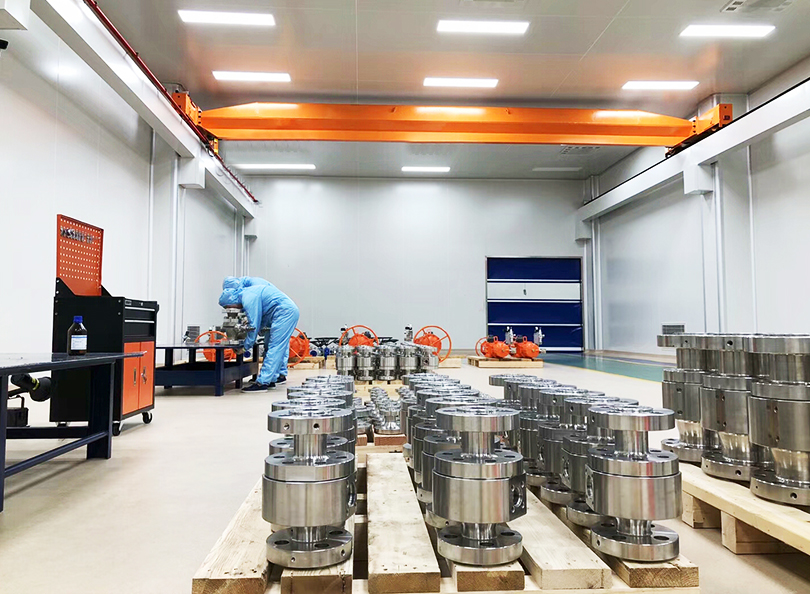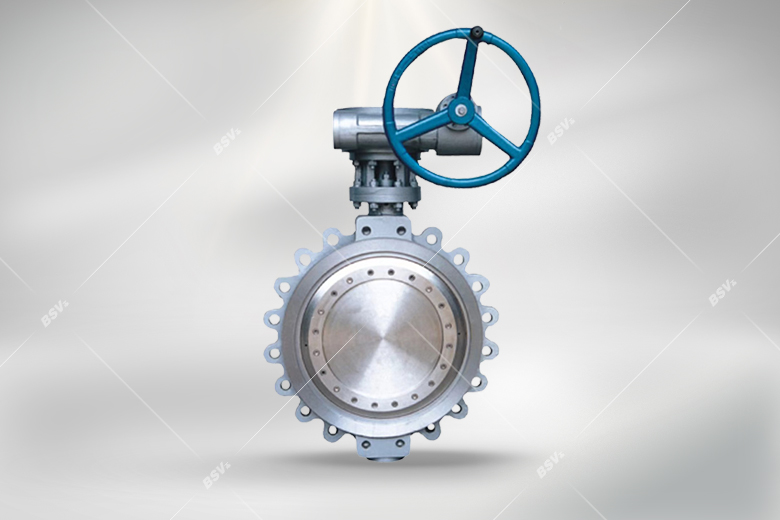Release time:2025-04-21Clicks:
Butterfly valves are one of the most versatile and widely used types of valves in industrial applications. Known for their compact design, lightweight structure, and efficient flow control, these valves are essential in regulating fluid flow in pipelines. Whether you're managing water, oil, gas, or other substances, understanding how to properly operate a butterfly valve is critical to ensure optimal performance and longevity. In this article, Lishui BSV Valves Supplier, a trusted name in the valve industry, explains the best practices for operating butterfly valves and maximizing their efficiency.
A butterfly valve is a quarter-turn rotational motion valve that uses a disc to regulate or isolate the flow of fluid. The disc, which is mounted on a rotating shaft, opens or closes the valve as it rotates. When the valve is fully open, the disc is positioned parallel to the flow, allowing maximum flow capacity. Conversely, when the valve is closed, the disc is perpendicular to the flow, completely blocking it.
Butterfly valves are commonly used in industries such as water treatment, oil and gas, chemical processing, and HVAC systems. Their design offers several advantages, including quick operation, minimal maintenance, and suitability for large-diameter applications. However, proper operation is essential to avoid damage and ensure long-term reliability.

Before diving into the operational procedures, it’s important to understand the key components of a butterfly valve. Here’s an overview of the main parts:
Understanding these components will help you operate the valve effectively and address any potential issues during operation.
DBB Ball Valve (Double Ball)
Integral Ball Valve
3PC Ball Valve
Worm Gear Wafer Center Line Butterfly Valve
Pneumatic Lug Type Butterfly Valve
Lugged Type Knife Gate Valve
Pressure Sealing Gate Valve
Operating a butterfly valve may seem straightforward, but following the correct procedures is essential to avoid operational issues and extend the valve’s lifespan. Below, Lishui BSV Valves Supplier outlines the step-by-step process for proper operation:
Before operating the butterfly valve, inspect it thoroughly to ensure it is in good condition. Check for signs of damage, corrosion, or debris that may obstruct the valve’s movement. Pay special attention to the disc and seat, as these components are critical for effective sealing and flow control.
Additionally, verify that the valve is compatible with the fluid type, pressure, and temperature conditions of your application. Using the wrong valve for your system can lead to performance issues and potential safety hazards.
Proper installation is key to the successful operation of a butterfly valve. Ensure that the valve is correctly aligned with the pipeline and that the flanges are securely fastened. Misalignment can cause uneven wear on the disc and seat, leading to premature failure. If the valve is equipped with an actuator, make sure it is properly calibrated and connected.
It’s also important to confirm that the valve is in the correct position (open, closed, or partially open) before starting the operation. This will help prevent sudden pressure surges or flow disruptions.
When opening or closing the valve, do so gradually to avoid sudden changes in pressure or flow. Rapid operation can cause water hammer, a phenomenon where pressure surges damage the pipeline and valve components. Use smooth and controlled movements, especially in high-pressure systems.
If the valve is operated manually, use the handle or lever with steady force. For automated valves, ensure the actuator is functioning correctly and avoid overriding its settings unless necessary.
While the valve is in operation, monitor it closely to ensure it is functioning as expected. Check for any unusual noises, vibrations, or leaks, as these may indicate underlying issues that need attention. If you notice any abnormalities, stop the operation immediately and investigate the cause.
Regular monitoring is particularly important in critical applications where valve failure can have significant consequences, such as in chemical processing or high-pressure systems.
Proper maintenance is essential to keep your butterfly valve in optimal condition. Schedule regular inspections and cleaning to remove any buildup of debris or contaminants. Lubricate the moving parts, such as the shaft and actuator, to ensure smooth operation.
Replace worn or damaged components, such as the seat or disc, to maintain the valve’s sealing performance. Lishui BSV Valves Supplier recommends following the manufacturer’s maintenance guidelines for best results.
Over-tightening the valve can damage the seat and disc, leading to leaks and reduced performance. When closing the valve, apply only the necessary force to achieve a tight seal. For automated valves, ensure the actuator’s torque settings are within the recommended range.
Over-tightening is a common mistake that can be easily avoided with proper training and awareness.
If the butterfly valve is not in use, store it in a clean and dry environment to prevent corrosion and contamination. Keep the valve in the fully open position to protect the seat from deformation. Cover the valve openings to prevent dust and debris from entering.
Proper storage is particularly important for spare valves that may be kept in inventory for extended periods.
Even with the best intentions, operators can make mistakes that compromise the performance and longevity of a butterfly valve. Here are some common pitfalls to avoid:
By avoiding these mistakes, you can ensure the reliable and efficient operation of your butterfly valve.

As a leading manufacturer and supplier of high-quality butterfly valves, Lishui BSV Valves Supplier is committed to providing reliable solutions for your flow control needs. Our valves are designed to meet the highest standards of performance, durability, and safety, making them ideal for a wide range of applications.
Here’s why customers trust Lishui BSV Valves Supplier:
Whether you’re looking for a new butterfly valve or need assistance with an existing system, Lishui BSV Valves Supplier is here to help.
Proper operation and maintenance of butterfly valves are essential for ensuring their longevity and efficiency. By following the guidelines outlined in this article, you can optimize the performance of your valve and avoid common pitfalls. Remember to inspect the valve regularly, operate it gradually, and perform routine maintenance to keep it in top condition.
Lishui BSV Valves Supplier is your trusted partner for all your butterfly valve needs. With our extensive product range, expert support, and commitment to quality, we are dedicated to helping you achieve reliable and efficient flow control. Contact us today to learn more about our products and services.